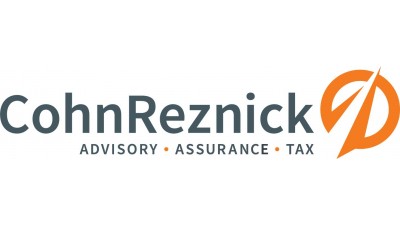5 Economic Trends Impacting Commercial Real Estate In 2018

The U.S. began 2018 with a new tax law, new construction and a new hope for economic growth. Drops in unemployment and a predicted bump in gross domestic product point toward a positive year for businesses and consumers alike. For commercial real estate, a wealthier America makes for a stronger property market.
From the benefits of tax reform to concern over inflation, here are five economic trends poised to shape CRE in 2018.
1. Tax Reform
Commercial real estate is one of the industries primed to benefit from the Tax Cuts and Jobs Act of 2017. A significant change was the lowering of the corporate tax rate from 35% to 21%. Real estate businesses can also take advantage of an increased deduction on pass-through entities. This allows owners of large real estate holdings through LLCs to deduct a percentage of their income from their taxes by passing it to a sole proprietorship.
Early conversations among GOP lawmakers called for the elimination of 1031 exchanges, which allow investors to sell a property, reinvest the proceeds in a new property and defer all capital gain taxes. The policy remains in place under the new law.
2. Flat Unemployment
The U.S. created 148,000 jobs in December. While job growth is on the rise, December marked the slowest pace in three months. Despite the slower growth, wages increased 2.5% from December 2016 to December 2017, up from 2.4% in the prior month.
Inflation has a direct impact on consumer spending, which could further strain the retail industry. A 2.1% rise in inflation from 2016 to 2017 offset the modest wage growth seen in Q4. More frugal shoppers fueled store closing announcements, which more than tripled to 7,000 last year. This year could see continued shifts in brick-and-mortar retail, as e-commerce gains a greater share of the market.
Across the construction industry, the addition of roughly 210,000 new construction jobs in 2017 highlighted the shortage of skilled workers across U.S. job sites. Despite spending on new projects peaking at $1 trillion, the industry has yet to regain workers following the Great Recession.

3. Favorable GDP Growth Predictions
Following the announcement that the federal government plans to increase spending in the area of $1 trillion a year, JPMorgan predicts U.S. gross domestic product will grow by 2.6% in 2018, up from a prior estimate of 2.2%. It also predicted that U.S. GDP in 2019 would expand by 1.9% versus a previous projection of 1.6%.
GDP grew by 2.6% year over year in Q4, a slight slowdown from Q3’s 3.2% year-over-year growth. A housing shortage could be behind the slower growth in Q4. Only 1.2 million housing units were constructed compared to the historical average of 1.5 million units annually.
4. Increased Demand For Housing
While an underproduction of housing defined Q4, privately owned housing starts came in at a seasonally adjusted annual rate of 1.33 million units in January, according to the U.S. Census Bureau. This is up 9.7% from the revised December estimate of 1.21 million, and up 7.3% from 1.24 million starts last year.
Single-family projects have also rebounded, rising 3.7% from 846,000 projects in December to 877,000 in January.
Increased confidence in housing development comes as demand across multiple generations is on the rise. More millennials continue to fall within the prime renting age from 20 to 34 while baby boomers trade in single-family homes for apartments in urban centers. As millennials start to raise families, many are following in their parents’ footsteps and purchasing single-family homes. Two months into 2018, homeownership in the U.S. has risen from 62.9% to 64.2%.
The continued drop in unemployment and improved economic outlook have contributed to a rise in homeownership.
5. Rising Interest Rates
The potential for rising interest rates has incentivized Americans to buy homes sooner rather than later. Mortgage buyer Freddie Mac says the average rate on 30-year, fixed-rate mortgages rose to 4.38% this week, up from 4.32% last week and the highest since April 2014. This increase stems from growing concern over inflation and a 0.5% increase in the consumer price index in January.
Higher rates lead to more expensive loans to refinance or develop new properties. Inflation can also cause a surge in value among existing assets.
To learn more about this Bisnow content partner, click here.

